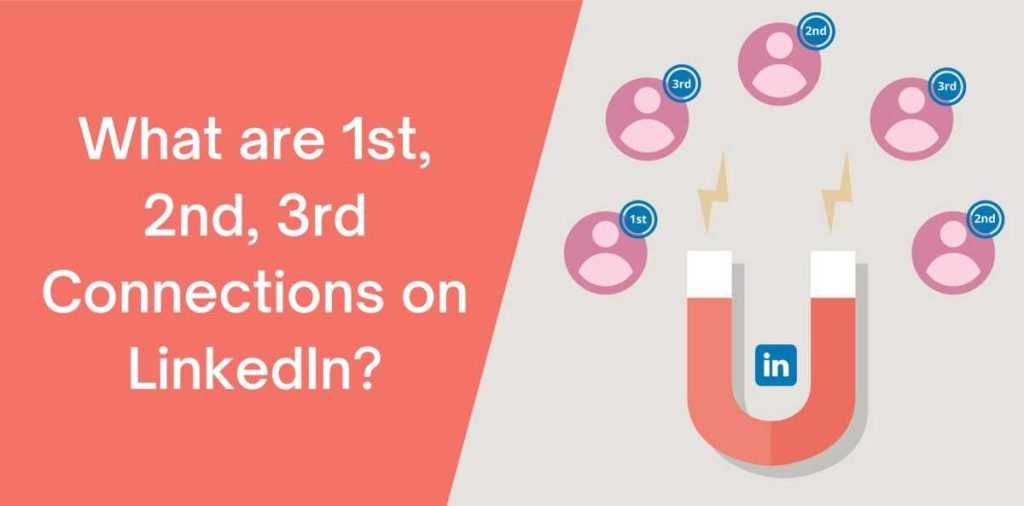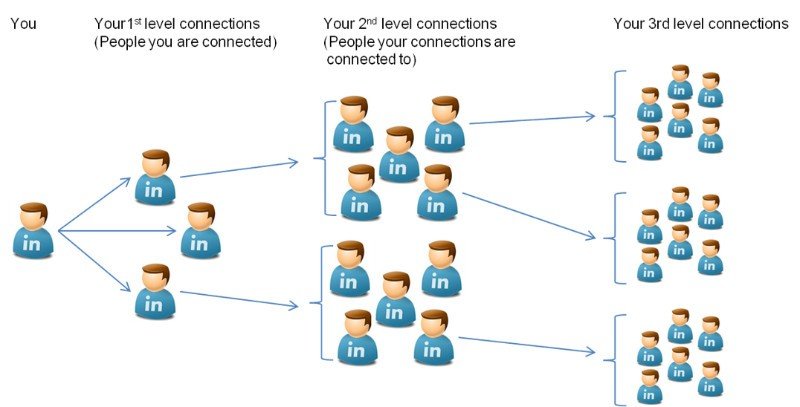LinkedIn Professional Networking platform, has an innovative method to classify your connections according to the degree of relationship that you have with them. These types of categories are generally described as 1st, 2nd, and 3rd connections on LinkedIn. Knowing the differences between these connections is essential to maximize the potential for networking on the platform.

The Dynamics of 1st Connections:
Individual vs. Professional Connections
Although 1st connections typically include close family members, friends and even classmates, LinkedIn emphasizes the importance of building an professional network. LinkedIn is a platform that was designed to help you develop your career along with industry networking, as well as business collaborations. So, as you make connections with your friends it is important to maintain a professional manner and the relevance of your interactions is essential.
Building a Strong 1st Connection Network:
Effectively establishing your first connections is a mix of outreach that is proactive along with organic development. Participate in professional events, both in-person as well as online, to meet experts in your industry. After your interactions, swiftly join LinkedIn with a personalised invitation to reinforce the purpose of your interaction.
The Power of 2nd Connections:
Expanding Your Reach:
Your second connections are an extended network of untapped potential. Consider them potential clients, collaborators, or mentors who are waiting for you to discover them. Utilizing the potential of your 1st connections, you can ask for introductions to those within your 2nd-degree network.
Advanced Search and Filtering:
LinkedIn has the most powerful search and filtering features that allow you to refine your search for second connections based on factors such as location, industry and the title of your job. This feature is particularly helpful to target your networking efforts and finding professionals who are aligned with your objectives.
Networking Etiquette:
If you are reaching out to second acquaintances, you must be respectful and courteous. It is important to clearly state your intentions for the connection and state your reasons for why you believe that it will be beneficial for both parties. Showing genuine interest in their work or experience could increase the chance of receiving a positive reaction.
Navigating the 3rd Connections Terrain:
Casting a Wider Net:
The 3rd connections you have will expand your reach further and introduce you to professionals who might not be part of your network. This wider reach is vital in broadening your network and exposing you to a variety of perspectives in your field.
Viewing Profiles and Making Informed Connections:
A benefit of third connections is the capability to check out their profiles prior to making contact. This feature lets you determine the compatibility, shared interests or collaboration possibilities. Before you connect, take the time to customize your outreach messages based on the data gathered by their online profiles.
Strategies for Maximizing LinkedIn’s Networking Potential:
Consistent Engagement:
Consistency is key on LinkedIn. Be sure to regularly engage with the content of your network by commenting, liking, or sharing. This not only builds stronger connections, but it also makes your profile visible on RSS feeds from your friends.

Content Sharing:
Make sure you share content that reflect the interests of your profession and knowledge. A thoughtful sharing of information, articles and your knowledge positions you as a highly active and committed participant in your professional community.
LinkedIn Groups:
Joining LinkedIn groups can be a great opportunity to network. Join groups related to your area of expertise or interests to discuss topics and share your knowledge and meet like-minded professionals.
Skill Endorsements and Recommendations:
The endorsements and recommendations you receive enhance your credibility. Request and offer endorsements on specific capabilities, as well as seek recommendations from your supervisors and colleagues. Social proof boosts your professional status.
Job Seekers and Recruiters:
LinkedIn is an excellent platform for both recruiters and job seekers alike. Job seekers can use their connections to discover new opportunities and recruiters can find the top talent via connections and introductions.
The Evolving Landscape of LinkedIn:
Features and Updates:
LinkedIn frequently releases new features to improve the user experience. Keep up-to-date with updates to the platform because they frequently offer additional tools to help with networking, sharing content and professional development.
Remote and Hybrid Work Trends:
The move toward hybrid and remote work has affected how professionals communicate with each other on LinkedIn. Webinars, virtual networking meetings or online training sessions have been essential elements of LinkedIn’s ecosystem.
Inclusive Networking:
LinkedIn’s dedication to inclusion and diversity is apparent through its work to build an environment that is more fair for professionals. Take this into consideration when you are expanding your network and actively seeking connections with professionals of different backgrounds.

Conclusion:
In short, the differences between 1st, 2nd third, and 4th connections of LinkedIn provide a more nuanced method for professional networking. Through understanding and strategically exploiting every connection level professionals can gain access to many possibilities, create a robust network, and remain in the forefront of their fields. LinkedIn’s ever-changing features, coupled with well-thought-out interactions and strategies for networking, create a powerful platform for career advancement and professional growth.





